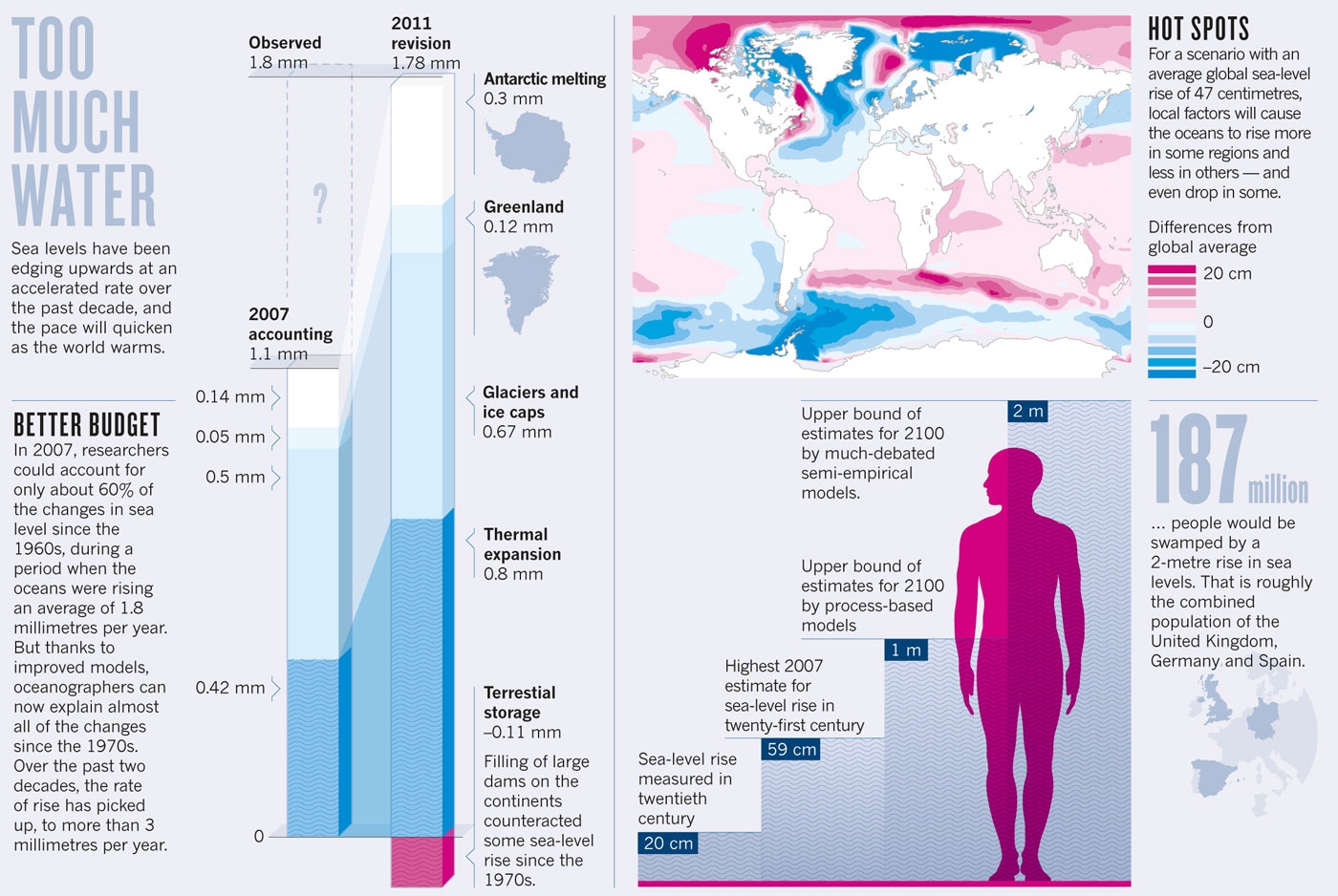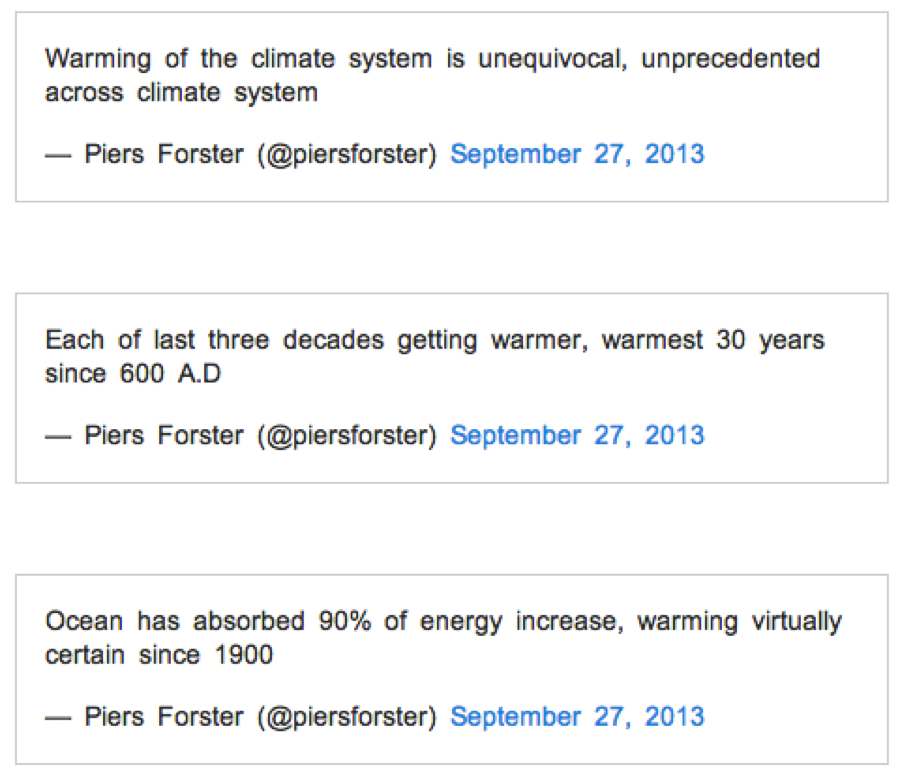In case you missed it, the Intergovernmental Panel on Climate Change (IPCC) released its Fifth Assessment Report Monday, finding that “it is extremely likely that human influence has been the dominant cause of observed warming since the mid-20th century”.[1] Such reports, released every six years, seek to synthesize the present state of scientific knowledge relevant to climate change – a joint project between thousands of volunteer scientists and government representatives from more than 120 countries. The official media report from the World Meteorological Organization can be found here .
Given how technically complicated and nuanced these reports are, here are five quick ways to better understand climate change in the context of Monday’s release:
1. Report in Tweets
estimated time = 2 min.
My favourite comes from climate scientist Piers Forster, who summarizes the report in 18 tweets, some of which I’ve put below:
and two of the most striking:
The rest of the tweets can be found here. I highly recommend going through all of them for by far the fastest access to this report.
2. Report in Images
estimated time = 30 sec.

Scientific American put together a small compilation of images from the report. All in all, not that enlightening, but gives a fast glance at some of the scientific data.
3. Sea-level rise simulator
estimated time = 5 min. +

One of the most difficult questions in climate science has been understanding the extent of sea level rises in assessing potential risk – a pressing question given how disproportionately the majority world, largely not responsible for climate change, would be affected. A great article on accounting for rising tide levels, which shows how the latest report accounted for the new figures for sea level rises.
This program allows you to view the potential costs to coastal land for different levels of sea rise. Adjust it between the parameters listed in the report to see the cost to people, land, and infrastructure. The new report has set the sea level rise to be as little as 26cm (~1ft in this simulator) to as much as 82cm (~3ft.) by 2100, though some reports state that sea level rises could be even higher – especially after the end of this century.
Unfortunately, the above only works for U.S. coastal locations. This is a map that lets you look at coastline from around the world.
4. Video report
estimated time = 23 min. 4 sec.
For the video news inclined, Amy Goodman reports on the climate assessment with guests Kumi Naidoo, Executive Director of Greenpeace, and Jeff Masters, director of meteorology at the Weather Underground.
5. Quick, Awesome Reads on Climate Change
estimated time = 1 afternoon +

Have even more free time? Of the many books on climate change, one of the most eminently readable and condensed (can be finished in an afternoon) reads is undoubtedly MIT professor Kerry Emanuel’s book What We Know About Climate Change. Highly recommended for anyone wanting a straightforward and accessible account that appeals to all political affiliations. The introduction can be read on Google Books, and is available for purchase on Amazon for less than $10.
For a more technical and involved treatment, try Howard Friel and Thomas E. Lovejoy’s The Lomborg Deception: Setting the Record Straight About Global Warming. This work responds largely to Bjørn Lomborg’s The Skeptical Environmentalist and other works of climate scepticism. Presumably, the two should be read together – though I recommend you would get a sense for the arguments of both in Friel and Lovejoy’s book, which systematically untangles and addresses the points Lomborg raises in The Skeptical Environmentalist.
Finally, are you looking to rebut your climate sceptic friends? Skeptical Science, an online database of arguments surrounding climate change gives accessible responses to many questions raised by climate misinformation. Though not authoritative, the free app makes this a great way to learn about climate change on the go.
[1] http://www.ipcc.ch/news_and_events/docs/ar5/press_release_ar5_wgi_en.pdf



Well written post Hilton!